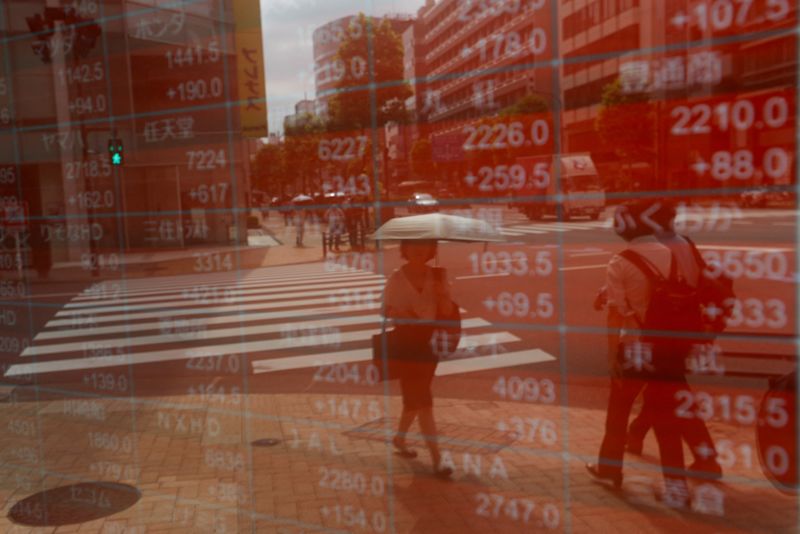Morning Bid: US soft landing hopes lift EM assets
By Jamie McGeever
(Reuters) - A look at the day ahead in Asian markets.
The trading week gets underway in Asia on Monday, with investors in pretty good spirits following last week's rebound in risk appetite as the fabled U.S. 'soft landing' comes back into view, a scenario that should bode well for Asian and emerging markets.
Emerging market equities posted their biggest weekly rise since April and world stocks their best week since October. The Nasdaq and S&P also had their best week since October, and the VIX 'fear index' of Wall Street volatility is back below 15.0.
Even Chinese stocks snapped a three-week losing streak to rebound from a six-month low. Although the bounce was a slender 0.4%, it is a move in the right direction as far as China bulls - and policymakers - are concerned.
But China's economic numbers remain weak and continue to undershoot even economists' increasingly gloomy expectations. China's economic surprises index, which has been negative since June, last week fell to its lowest in almost a year.
U.S. data and expectations have also slumped in recent months, but there are signs of stabilization, and investors are cooling on bets that the Fed will be forced into delivering a jumbo-sized rate cut next month.
Traders have slashed the probability of a 50-basis point move to around 25% as the market turmoil from early this month has evaporated. If recession fears wane, riskier assets like stocks and emerging markets should benefit.
The recent strong rebounds in U.S. megacaps should also support Asian assets exposed to U.S. Big Tech - Nvidia (NASDAQ:NVDA ) shares are up 37% from their Aug. 5 low, so Taiwan's TSMC and the Hang Seng tech index could be in line for further gains this week.
The Asian economic and policy calendar on Monday is light. Japanese machinery orders, Malaysian trade and Thai GDP figures are the main highlights.
Figures on Friday from the U.S. Commodity Futures Trading Commission, meanwhile, showed that currency speculators are now 'long' the Japanese yen for the first time since March 2021.
Since the first week of July when the dollar was at a 38-year high around 162.00 yen, CFTC funds have completely covered one of their biggest short yen positions on record and the Japanese currency has rallied around 10%.
These are seismic moves, but it's worth remembering what it took to trigger them - another bout of intervention from Tokyo, an interest rate hike and hawkish posture from the Bank of Japan, and a frenzy of safe-haven buying and carry trade unwinds following the global volatility shock earlier this month.
Last week's wave of 'risk on' sentiment that washed over global markets, however, put the brakes on that. Dollar/yen rose 0.7%, not a big move by recent standards, but the biggest rise since June.
Here are key developments that could provide more direction to Asian markets on Monday:
- Japan machinery orders (June)
- Malaysia trade (July)
- Thailand GDP (Q2)
Source: Investing.com
